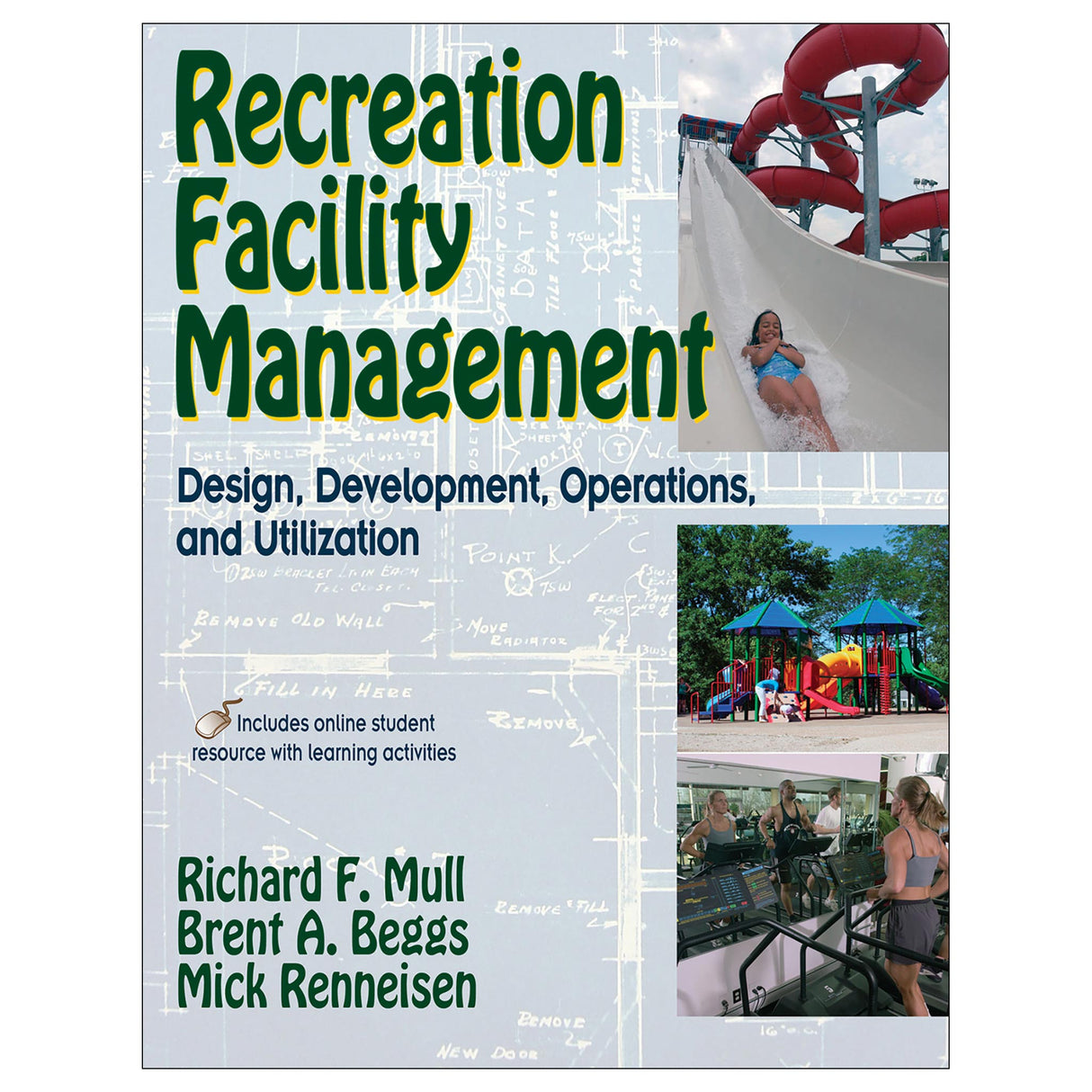Recreation Facility Management with Web Resource
Design, Development, Operations and Utilization
$49.00 CAD
Recreation facility management is a complex responsibility. Professionals in this field are responsible for various types of facilities—recreation centers, water parks and pools, playgrounds, parks, fitness centers, sport complexes, and resorts—each with its own set of goals and challenges. Recreation Facility Management: Design, Development, Operations, and Utilization provides students and new professionals with a basic understanding of recreation facilities and prepares them to perform the duties required of a recreation facility manager.
Part I of Recreation Facility Management offers a detailed look at the foundations of the profession, including the defining characteristics of recreation facility management and descriptions of the duties of a recreation facility manager and the areas within the facilities. Also featured are descriptions of the common indoor and outdoor elements of facilities, including sites, spaces, lighting, surfaces, utilities, landscaping, walkways, and parking areas.
The remaining parts of the book detail the practical knowledge and skills as well as tasks and processes required for managing various types of recreation facilities. Readers will find these features:
- A thorough discussion of the facility design and development process, including needs assessment, planning, reading blueprints, funding, the bid process, and construction
- Information on managing facility resources, including equipment; financial issues, such as budgeting, taxes, fees and charges, and donations; and human resources, including hiring, training, and evaluating employees
- A detailed examination of facility utilization, including safety and security, scheduling, maintenance, and emergencies and emergency response
- A review of parks, playgrounds, aquatic facilities, and ancillary spaces, including parking areas, showers and restrooms, and child care areas
- Coverage of national industry standards and guidelines for various types of facilities
Recreation Facility Management offers a practical introduction to facility design, management, and maintenance for practicing or future recreation professionals. This resource provides the knowledge and skills necessary for becoming a successful facility manager in any recreation setting.
Audience
Textbook for undergraduate courses in facility management, design, or operations of recreation areas and facilities. Resource for new professionals in the field.
Part I: Foundations of Recreation Facility Management
Chapter 1: Understanding Recreation Facility Management
Chapter 2: Managing Recreation Facilities
Chapter 3: Learning the Basics of Recreation Facilities
Part II: Design and Development of Recreation Facilities
Chapter 4: Assessment
Chapter 5: Planning
Chapter 6: Designing Recreation Facilities and Reading Blueprints
Chapter 7: Funding and the Bid Process
Chapter 8: Constructing Recreational Facilities
Part III: Resources for Recreation Facility Management
Chapter 9: Managing Equipment
Chapter 10: Managing Finances
Chapter 11: Managing Employees
Part IV: Utilization of Recreation Facilities
Chapter 12: Circulation, Safety, Control, and Security
Chapter 13: Coordinating and Scheduling
Chapter 14: Maintenance
Chapter 15: Emergencies and Emergency Responses
Part V: Auxiliaries of Recreation Facilities
Chapter 16: Parks and Playground Facilities
Chapter 17: Aquatic Facilities
Chapter 18: Ancillary Spaces
Chapter 19: Core Product Extensions and Areas
Understanding of blueprints, design documents a must for recreational facility managers
Instructor guide.This instructor guide contains sample course syllabi, chapter outlines, learning outcomes, and answers for the activities in the online student resource.
Test package.The test package consists of hundreds of multiple-choice, fill-in-the-blank, true-and-false, and essay and short-answer questions covering the content from all chapters.
Presentation package.The presentation package presents hundreds of PowerPoint slides covering content from all 19 chapters.





